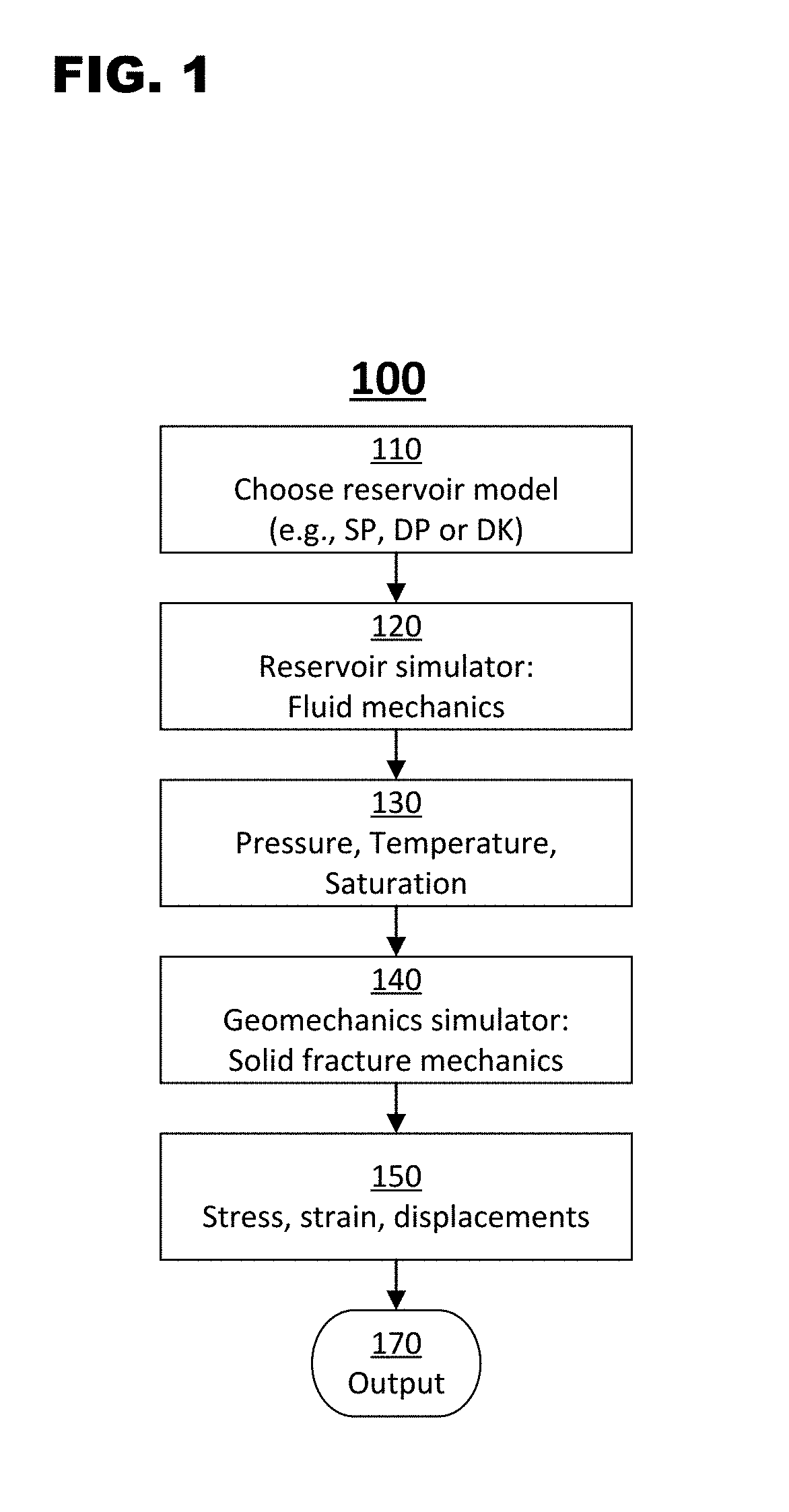Machine learning assisted reservoir simulation
a reservoir simulation and machine learning technology, applied in the field of electric, electronic and computer arts, can solve problems such as surface subsidence, damage to well equipment, and understanding and predicting subsidence at the surfa
- Summary
- Abstract
- Description
- Claims
- Application Information
AI Technical Summary
Benefits of technology
Problems solved by technology
Method used
Image
Examples
Embodiment Construction
[0022]Known coupling algorithms include one-way coupling (1WC) and two-way coupling (2WC). FIG. 1 is a flowchart showing a conventional one-way coupling (1WC) algorithm 100. Algorithm 100 begins with the selection of a reservoir model in step 110. This selection may be made manually by a user or automatically by a computer. As discussed above, the selected reservoir model is used for all subsequent simulation, including reservoir simulation 120 and geomechanical simulation 140. The reservoir model may be selected from a group including single porosity (SP), dual porosity (DP), and dual permeability (DK). In step 120, the selected reservoir model is used by a reservoir simulator to analyze fluid mechanics thereby computing pressure, temperature, and saturation (PTS) values 130. The PTS values 130, as well as the selected reservoir model 110, are used in step 140 by a geomechanical simulator to analyze solid fracture mechanics thereby computing stress, strain, and displacement values ...
PUM
 Login to View More
Login to View More Abstract
Description
Claims
Application Information
 Login to View More
Login to View More - R&D
- Intellectual Property
- Life Sciences
- Materials
- Tech Scout
- Unparalleled Data Quality
- Higher Quality Content
- 60% Fewer Hallucinations
Browse by: Latest US Patents, China's latest patents, Technical Efficacy Thesaurus, Application Domain, Technology Topic, Popular Technical Reports.
© 2025 PatSnap. All rights reserved.Legal|Privacy policy|Modern Slavery Act Transparency Statement|Sitemap|About US| Contact US: help@patsnap.com



